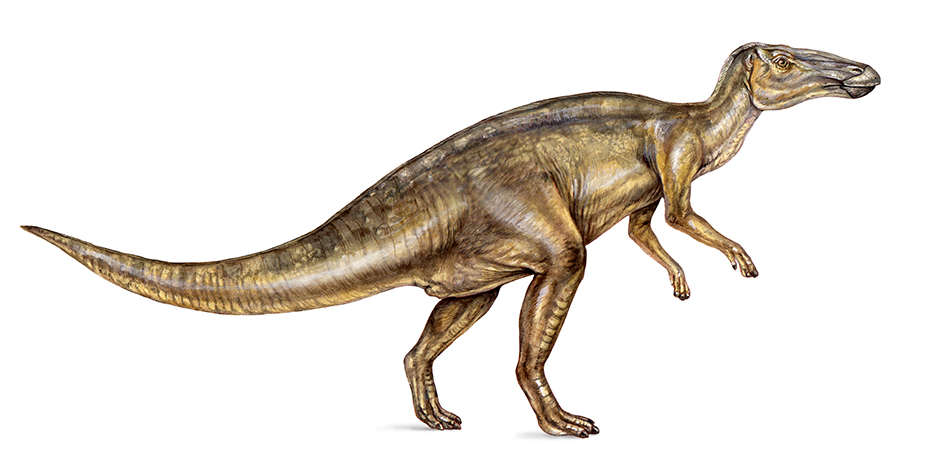Edmontosaurus << ehd MON toh sawr uhs >> was among the largest of a group of dinosaurs known as hadrosaurs. Hadrosaurs were at one time nicknamed duckbilled dinosaurs, because scientists thought their beak may have resembled a duck’s bill. New research, however, suggests that they may have had a smooth snout rather than a flat, ducklike bill. Some kinds of Edmontosaurus reached up to 43 feet (13 meters) long. Some could weigh up to 4 1/2 tons (4 metric tons). Fossils of tracks suggest that it usually walked on four legs. It could also walk on two legs to reach for food. It lived about 70 million to 65 million years ago in what is now western North America. It is named for Edmonton, Alberta, where its fossils were first found.

Unlike many other hadrosaurs, Edmontosaurus lacked a head crest. However, it may have had loose folds of skin around its nostrils. The dinosaur may have inflated these folds in displays to attract mates. Inflating the flaps also may have made sounds the dinosaur used to communicate. Skin impressions from preserved Edmontosaurus remains show clusters of irregularly shaped scales. Some scientists think the patterns of scales suggest the dinosaur may have been striped.
Edmontosaurus appears to have lived in large herds that likely migrated to find food. Edmontosaurus had hundreds of teeth that enabled it to grind up plants. Fossil remains of material in the dinosaur’s gut suggest it might have browsed for leaves, green stems, fruit, seeds, and bark. Some evidence suggests that it also grazed on low-lying ground plants.
Edmontosaurus was hunted by Tyrannosaurus and similar dinosaurs. Some computer models suggest that Edmontosaurus may have run at up to 28 miles (45 kilometers) per hour on its hind legs. At this speed, it could likely outrun Tyrannosaurus.
See also: Dinosaur (Ornithopods); Hadrosaur.
